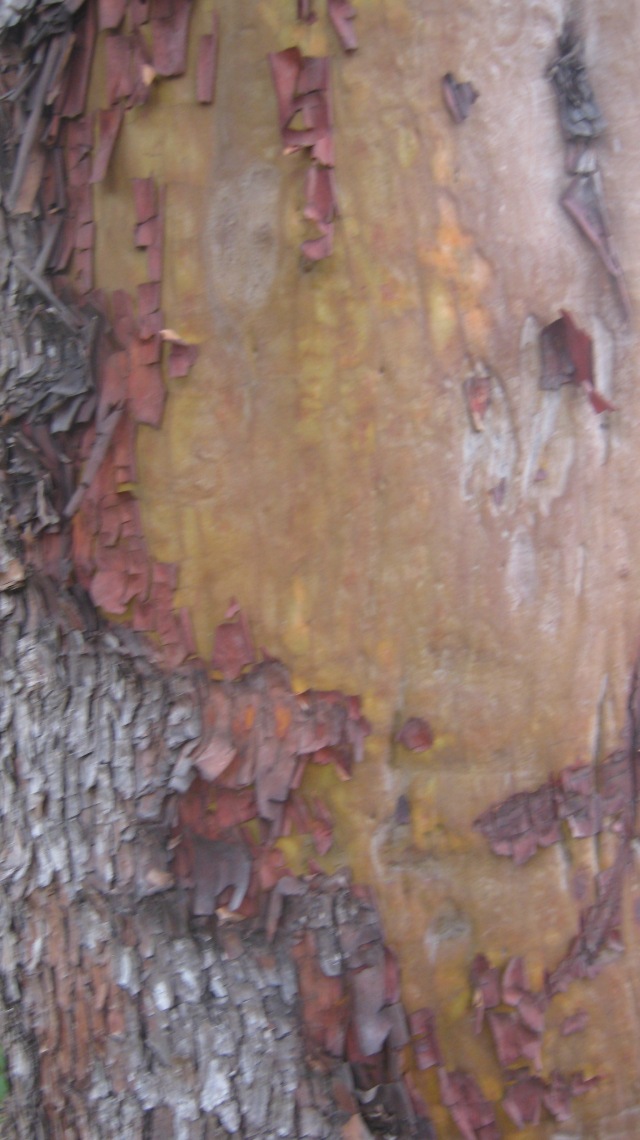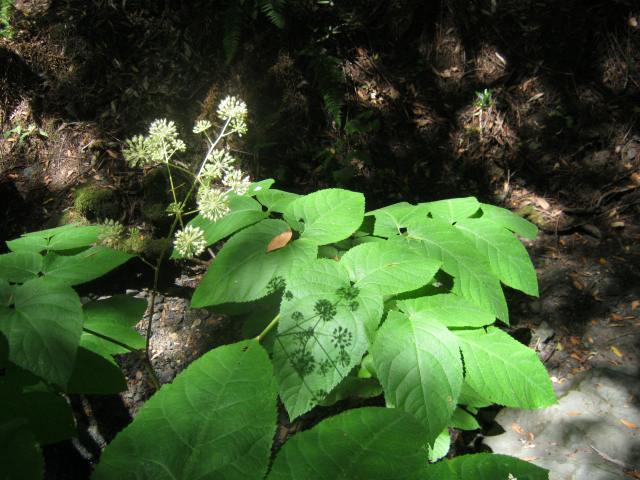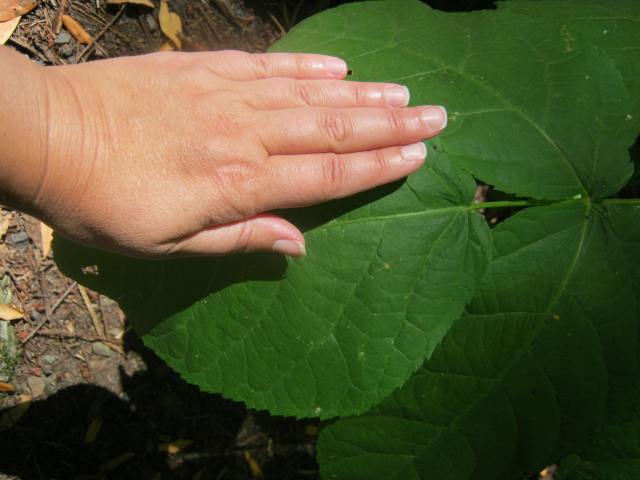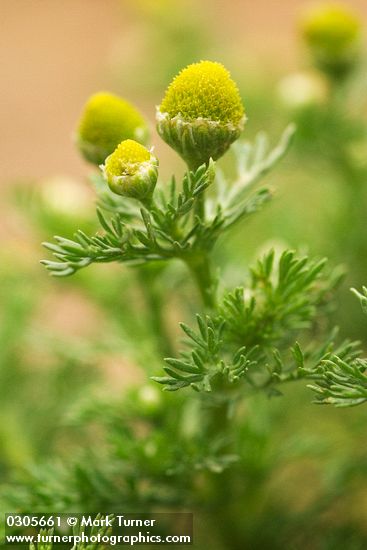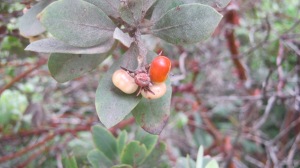Whenever they lived near the mouth of the river, in the bay, they had lots of food.
They had dried salmon, and likewise (dried) fern roots, which they ate during the winter.
They ate fern-roots (mostly).
Thus the people did during the winter.
Springbank clover likewise they ate in the winter.
And skunk-cabbage too, was eaten in the winter-time; also kinnikinnick-berries were eaten.
Such was the food of the people belonging to the past.
—Louisa Smith, Lower Umpqua/Siuslaw
Hanis: ɫkwa (rhizome); ɫk’wɪ´tɪmɫ (plant, ferns in general)
Milluk: ɫq’wa (rhizome); ɫq’watɪ´mɫ (plant)
Siuslaw: yauxa (rhizome)
Alsea: húúlhum
Tillamook: sa’aq (rhizome), ch’allashii (plant)
Upper Coquille: siisaq’ (rhizome)
Bracken fern (Pteridium aquilinum) is a fern found around the world – depending on which botanist you ask. Some botanists divide Pteridium into other species or subspecies, but however they are classified botanically, these ferns found in Eurasia, the Americas and Polynesia are similar. And they have been valued in many cultures. In parts of China, Korea and Japan the spring fiddleheads (the new fronds that emerge in spring) are a traditional food. Among indigenous people of America and Aotearoa (New Zealand), the rhizomes (roots) are more often eaten than the fiddleheads. In spite of this plants long history in numerous cultures as a food, it does hold some dangers for humans and animals.
For one, eating the greens past the early fiddlehead stage can be fatal for humans and livestock. The fronds contain an enzyme, thiaminase, that destroyed thiamine (vitamin B1). As for fiddleheads themselves, they contain a carcinogenic compound called ptaquiloside. However, how much of the compound is in any one fiddlehead can vary a lot – some populations in New Zealand were found not to contain it at all. The compound is also destroyed by both cold and hot temperatures. Many traditions around the world soak fiddleheads in changes of cold salt water, then cooked, so in all likelihood most ptaquiloside is destroyed. Even so, the recommendation is not too eat too many fiddleheads in any one year, just in case.
In western Oregon, curiously, most Native people did not eat fiddleheads, only the rhizomes (roots). Lottie Evanoff (Hanis Coos) commented on how pioneers ate fiddleheads, often with cream gravy, but Indians never did that. So far as I have been able to find, along the coast (Athabaskan, Coos, Siuslaw, Lower Umpqua, Alsea, and Tillamook) only the rhizomes were eaten. The one exception I have found is one source states Kalapuyans ate fiddleheads after rubbing the woolly coatings off in addition to eating the rhizomes. These plants were a staple food in western OR and in the rest of the Pacific Northwest where these ferns grow (which is quite a lot of regions).
The rhizomes were generally dug up in the fall to as late as December, and sometimes also in the spring (depending on the culture). They were baked on hot stones, coals or in earth ovens. The starchy roots were pounded and a black ‘string’ inside was removed (you can see a picture of the black ‘string’ at ArcadianAbe’s site). The starch could be pressed into cakes.
SOURCES
Barnett, Homer G. 1934. Indian Tribes of the Oregon Coast. National Anthropological Archives, Smithsonian Institution, Washington DC.
Batdorf, Carol. 1980. The Feast is Rich. Whatcom Museum of History & Art. Bellingham, WA.
Boyd, Robert, ed. 1999. Indians, Fire and the Land in the Pacific Northwest. Oregon State University Press, Corvallis OR.
Drucker, Phillip. 1933. Ethnographic Field Notes. Office of Anthropology Archives, Smithsonian Institution, Washington DC.
Gunther, Erna. 1973. Ethnobotany of Western Washington: The Knowledge and Use of Indigenous Plants by Native Americans. University of Washington Press, Seattle.
Harrington, John P. 1942. Alsea, Siuslaw, Coos, Southwest Oregon Athapaskan: Vocabularies, Linguistic Notes, Ethnographic and Historical Notes. John Peabody Harrington Papers, Alaska/Northwest Coast, in National Anthropological Archives, Smithsonian Institution, Washington DC.
Jacobs, Elizabeth. 2003. The Nehalem Tillamook: An Ethnography, edited by William Seaburg. OSU Press, Corvallis, OR.
Jacobs, Melville. 1932-34. Coos Ethnologic Notes, Notebooks 91-99, 101, Jacobs Collection, University of Washington Archives, Seattle.
Juntunen, Judy Rycraft, May Dash, Anne Bennett Rogers. The World of the Kalapuya: A Native People of Western Oregon. 2005. Benton CountyHistorical Society & Museum. Philomath OR
Turner, Nancy. 1997. Food Plants of Interior First Peoples.

